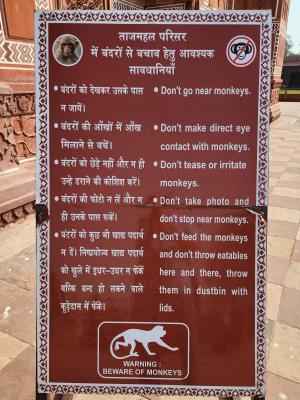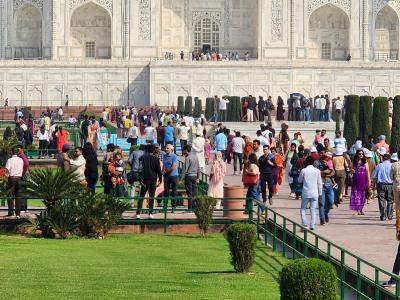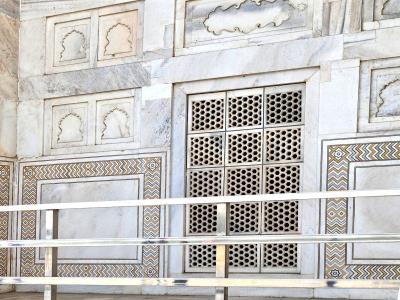Day 7 3/1/2023
India - Agra
Frank's Trip
CLICK on any image to enlarge - use mouse cursor to move enlargement it if doesn't fit area
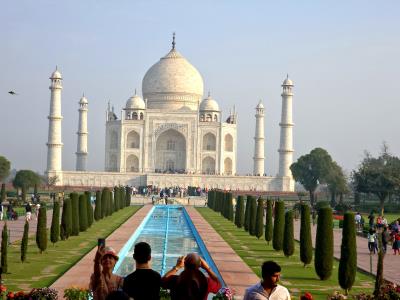
The Taj Mahal...
After getting somewhat up close and personal with this phenomenon, I can easily understand why it is a World Heritage Site as well as one of the Seven Wonders of the World.
It is not uncommon to see fantastical things - but they're usually and necessarily confined in their size and scope. The Taj Mahal is BIG. The square base platform is 22 feet high and 313 feet on each side. The height of the main dome (a.k.a. the 'Onion Dome') is 240 feet; the main building size is 187' x 108'. The 4 minarets are 141 feet tall and the overall complex occupies 42 acres.
The Taj Mahal was built between 1631 and in 1648 the mausoleum (the Taj Mahal itself) was essentially completed in 1648. It took several more years to complete the whole complex. The project employed some 20,000 artisans. When one looks closely at this magnificent and overwhelming complexity and takes note of the detail everywhere, one can see why it could take so many workers so long to complete.

 The Taj Mahal was designated as a UNESCO World Heritage Site in 1983 for being "the jewel of Muslim art in India and one of the universally admired masterpieces of the world's heritage".
The Taj Mahal was designated as a UNESCO World Heritage Site in 1983 for being "the jewel of Muslim art in India and one of the universally admired masterpieces of the world's heritage".
In 2007 it was declared as one of the "New 7 Wonders of the World"
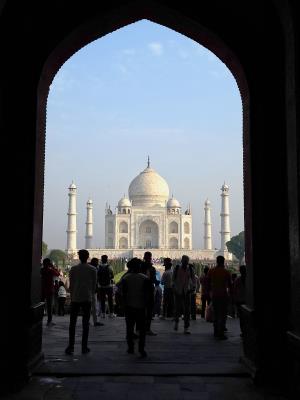
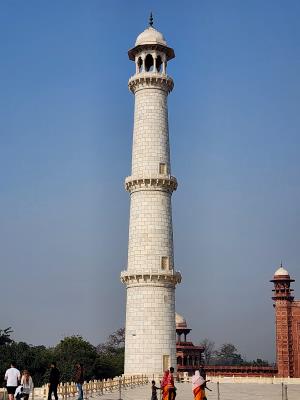
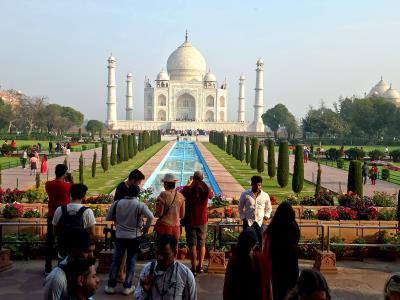

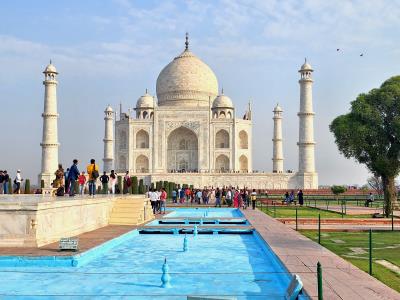
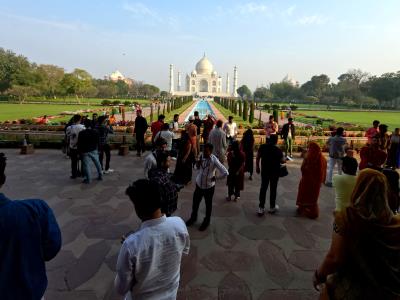
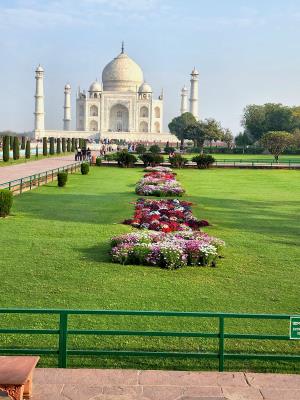
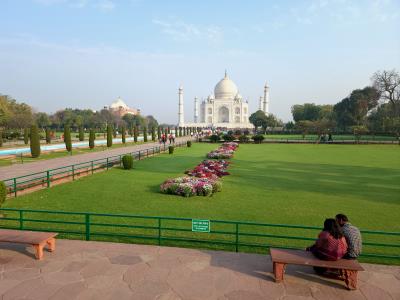
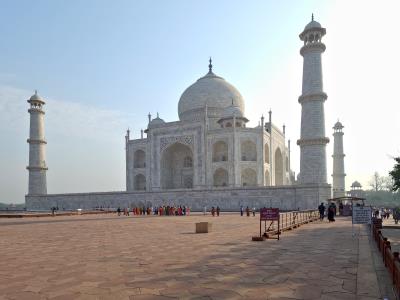
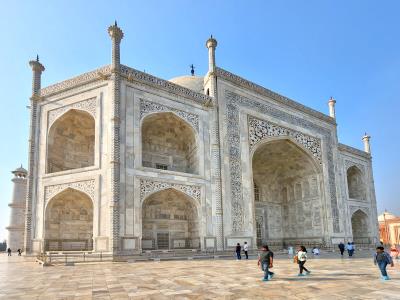
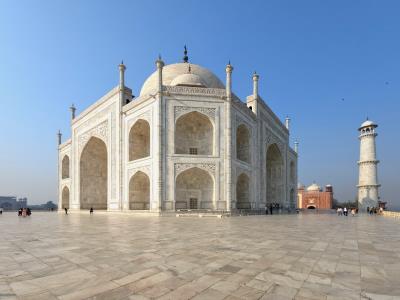
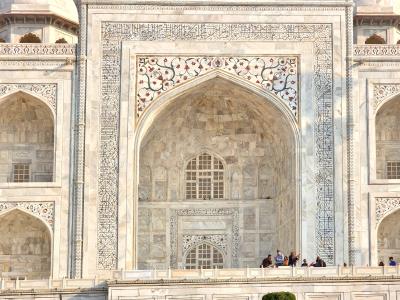
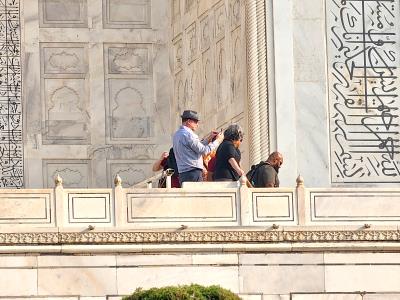
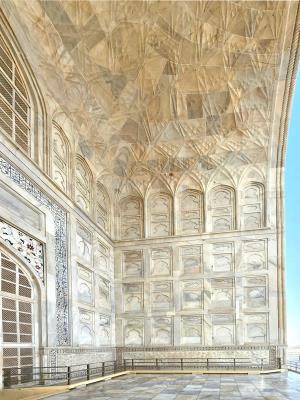
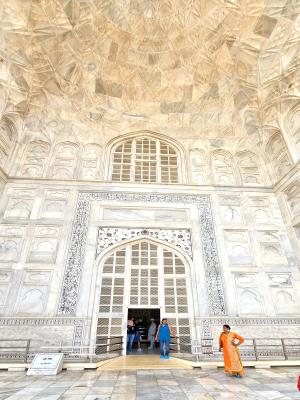
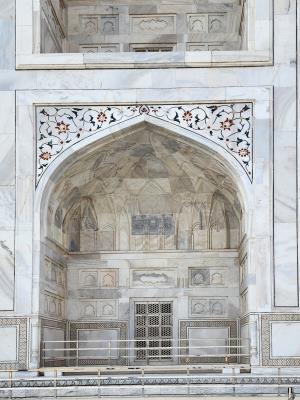
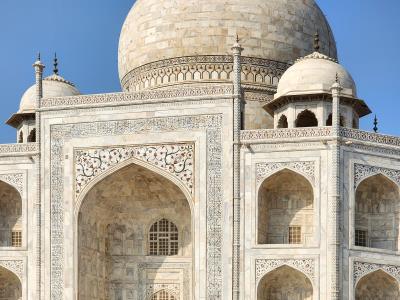
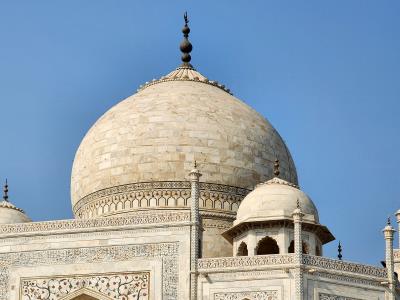
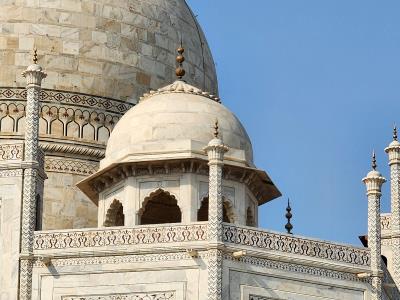
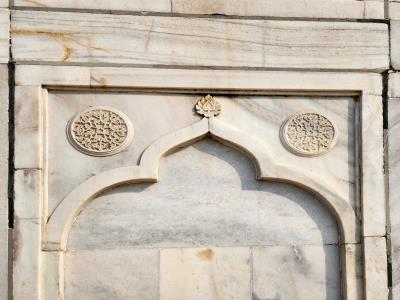
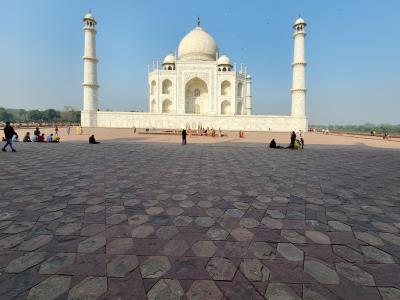
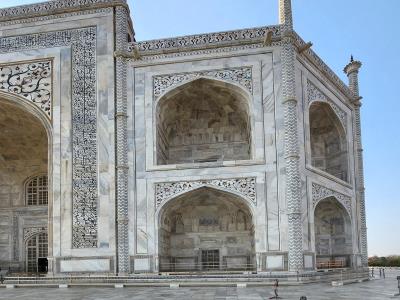
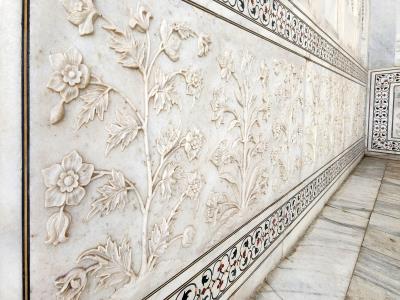
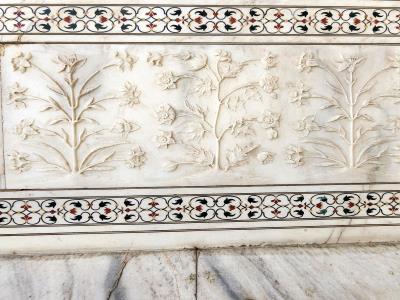
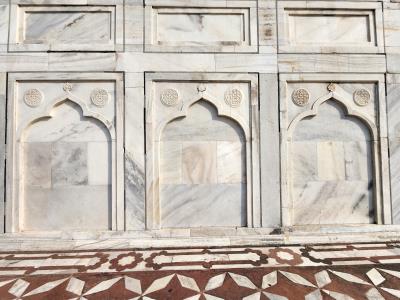
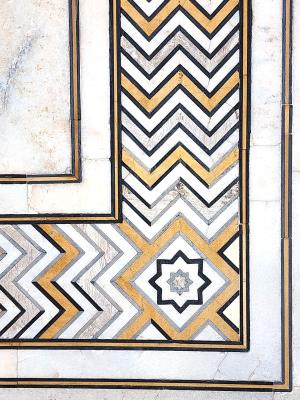
These screens are cut through solid marble about 2" thick!
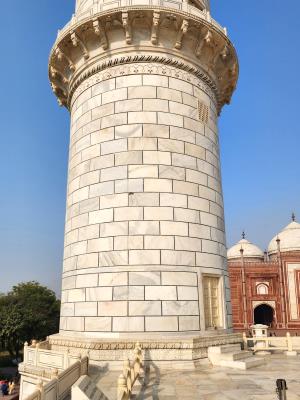
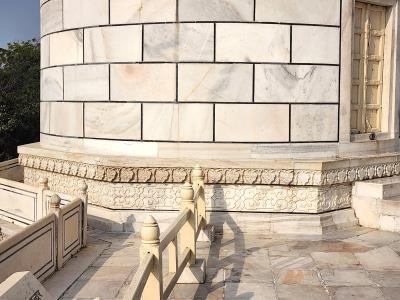
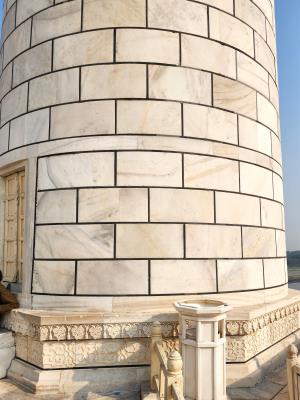
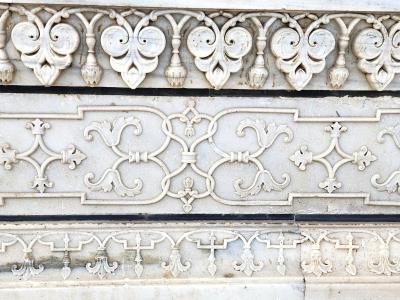
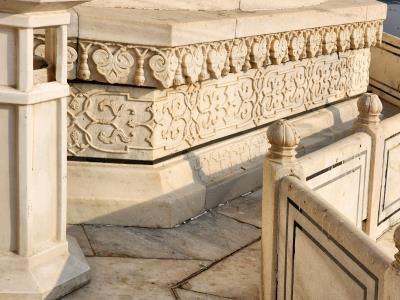
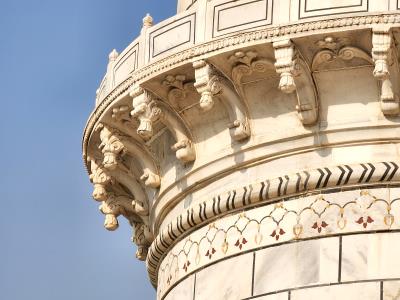
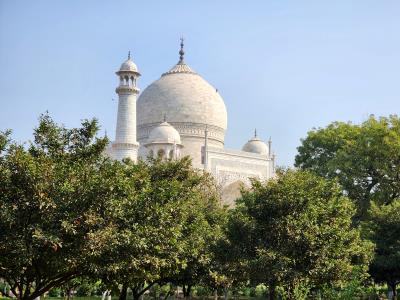
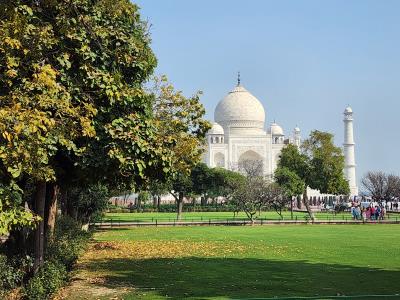
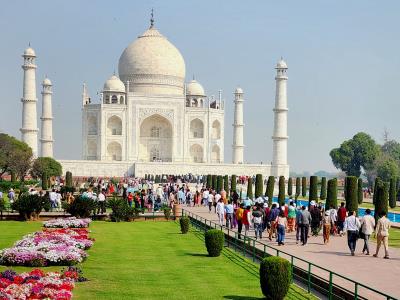
The Mausoleum
The mausoleum is no less magnificent inside than outside. Sadly, pictures are not allowed inside.
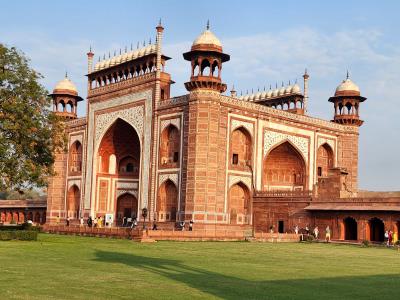
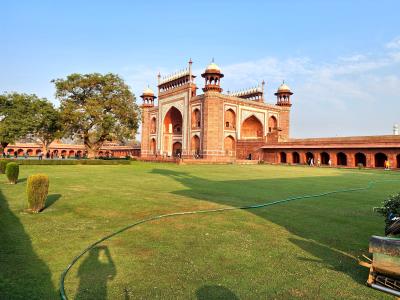
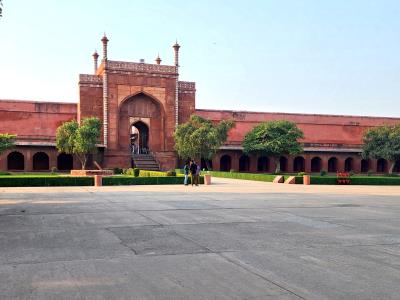
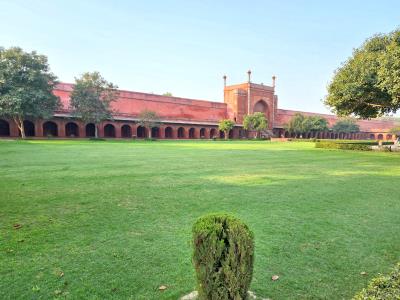
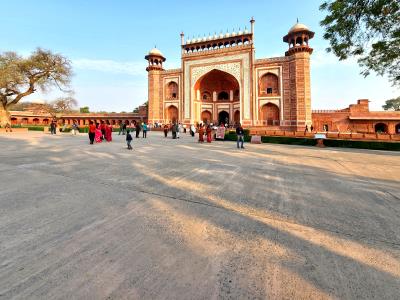
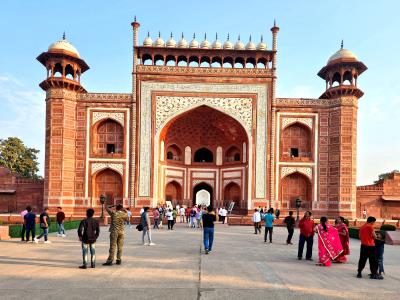
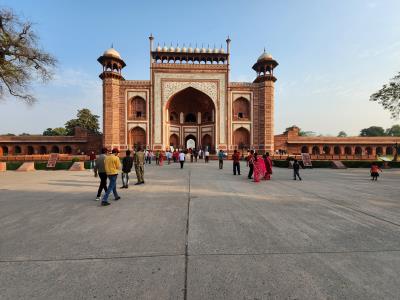
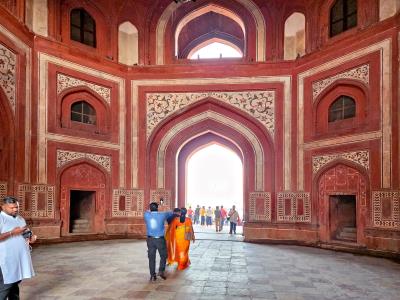
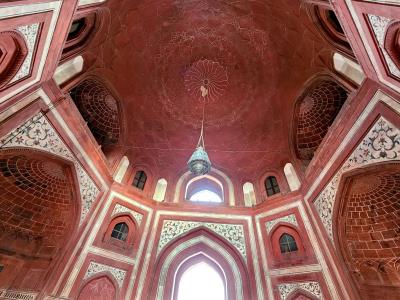
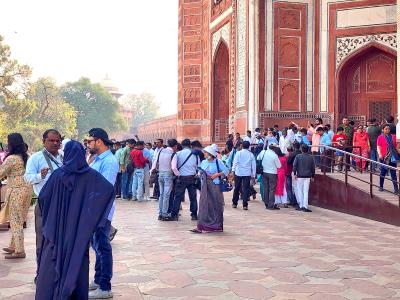
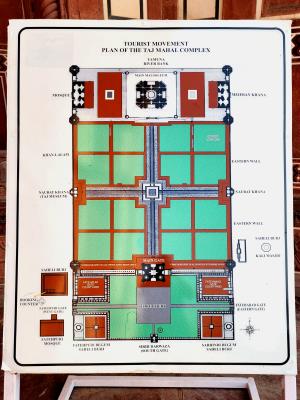
The Taj Mahal Complex
The centerpiece and entire reason for the complex is, of course, the Taj Mahal itself. However, additional years or labor was needed to produce the excellence of the surroundings to complete the whole complex.
The pictures below show the basics of the rest of the complex, though I didn't shoot the gardens which fill the spaces between walls and buildings. All parts of the complex exhibit the same quality of craftsmanship and exquisite detail of the Taj itself.
The Taj Mahal complex is bordered on three sides by crenellated red sandstone walls; the side facing the river is open. There are two grand red sandstone buildings that mirror each other, and face the sides of the tomb. The backs of the buildings parallel the western and eastern walls.
To the East and West of the mausoleum are the Mosque and Mehman Khana (mirror of mosque) to make complete symmetry of buildings.
In front of these structures are gardens. Running east and west as well as from the main gate are the waterways forming a cross pattern meeting at the central lotus pond.
Then there is another area of gardens between the lotus pond and the Main Gate.
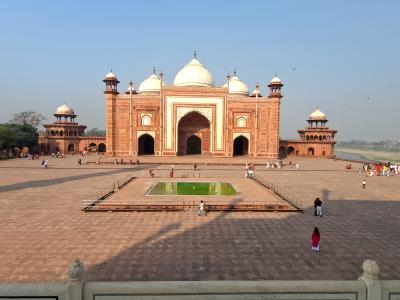
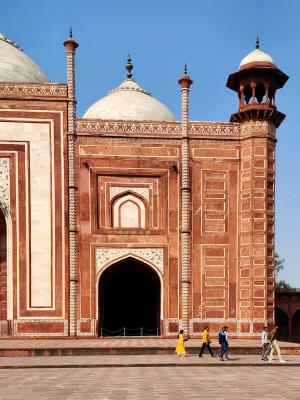
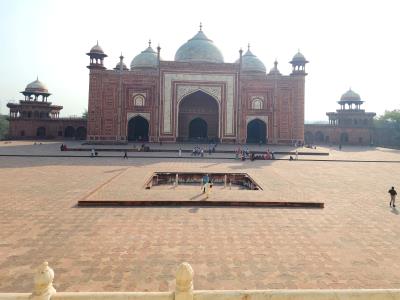
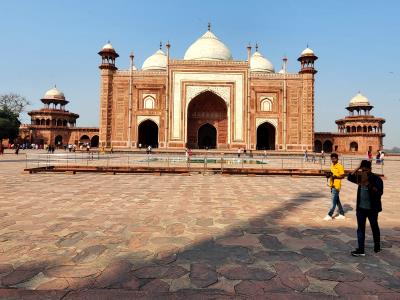
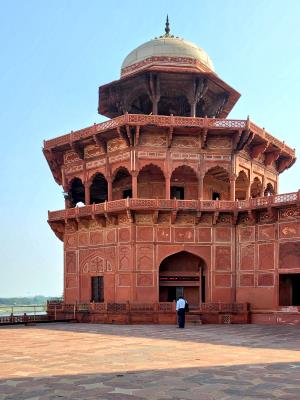
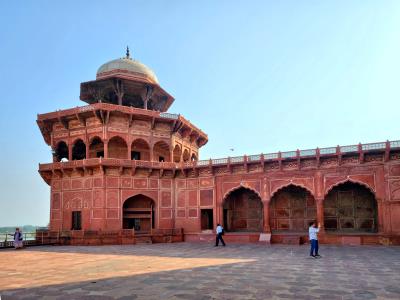
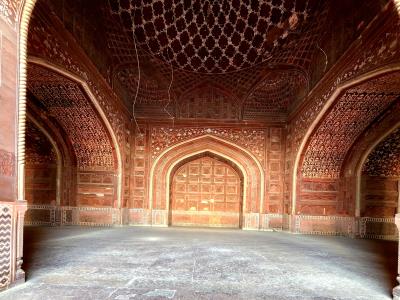
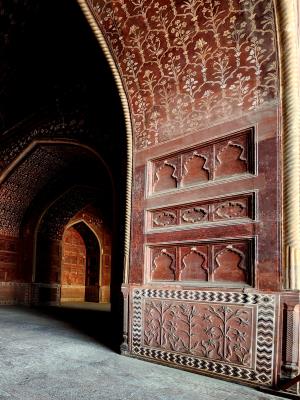
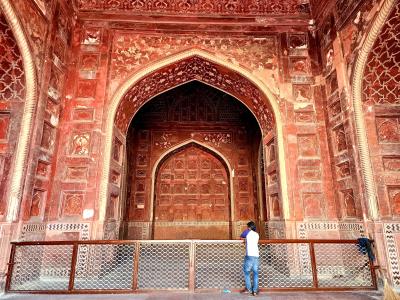
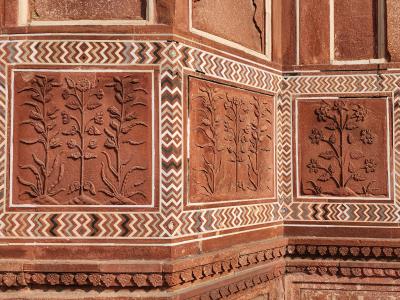
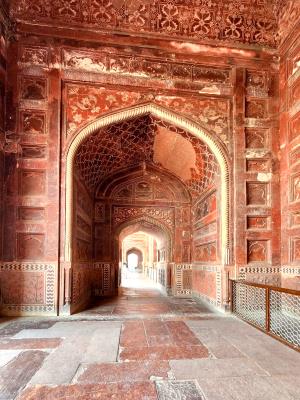
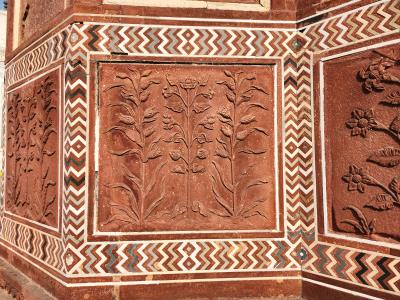
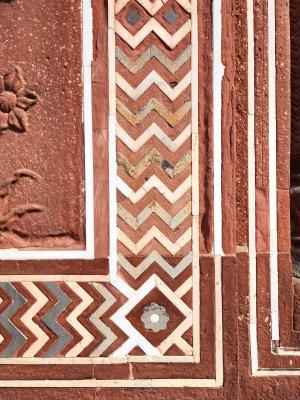
Water Palaces
The Eastern and Western Pavilions are identical and part of the overall design of the Taj. They are known as the Water Palaces since they stand at either end of the water canal leading to the central lotus pond.
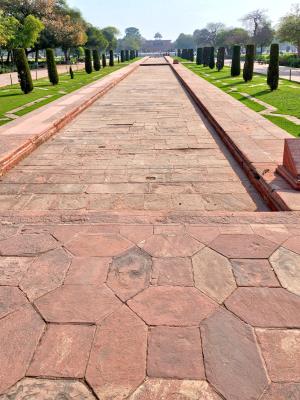
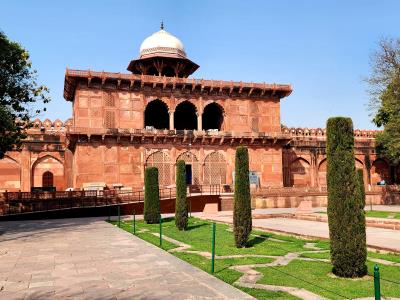
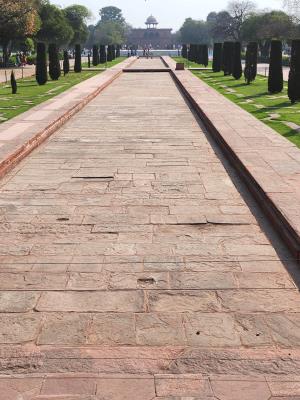
Don't Monkey Around!
